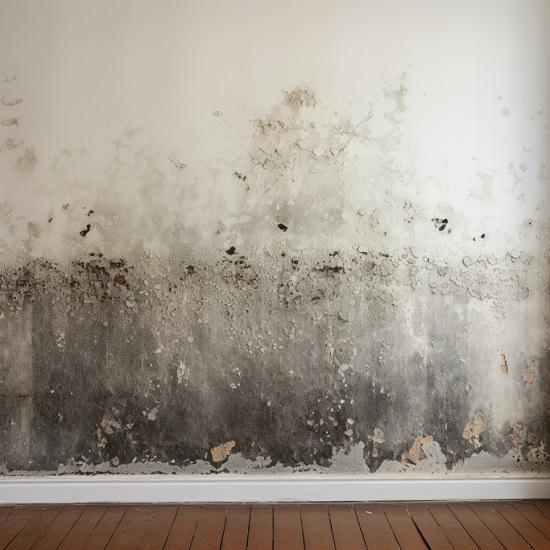Guidance on What to Do After Mold Remediation
Guidance on What to Do After Mold Remediation
Blog Article
Effective Post Mold And Mildew Removal Solutions for Your Home
Mold and mildew development in homes can be a persistent issue, frequently requiring a systematic strategy for reliable post-remediation options. From comprehending the elements that contribute to mold growth to carrying out appropriate cleaning techniques and dampness control procedures, the process can be intricate yet crucial for keeping a healthy and balanced living atmosphere. Additionally, exploring all-natural remediation solutions and developing a routine for ongoing upkeep are vital components of a thorough mold and mildew remediation strategy. As home owners aim to address mold and mildew issues, locating the most reliable options comes to be extremely important for the well-being of their houses.
Understanding Mold Development Factors
Mold growth is affected by a selection of factors that are important to understand in order to properly address and avoid its spreading. Understanding these elements is necessary in implementing successful mold removal approaches. The key factor adding to mold and mildew development is wetness. Mold and mildew spores call for dampness to thrive and germinate, making damp or humid environments highly susceptible to mold problems. Poor air flow can additionally bring about moisture build-up, developing an excellent reproduction ground for mold and mildew.

Moreover, air flow and light exposure can influence mold and mildew growth. Areas that do not have appropriate air flow and natural light are more prone to mold growth. By dealing with these aspects comprehensively, individuals can properly mitigate mold development and safeguard their living settings.
Proper Mold Cleansing Strategies
Using reliable cleaning methods is vital in preventing the reappearance and addressing of mold and mildew contamination in interior settings. The very first step in proper mold cleansing is to consist of the afflicted area to prevent the spread of spores to uncontaminated areas.

Executing Wetness Control Procedures
To properly prevent mold growth and contamination in indoor atmospheres, executing dampness control steps is paramount. Moisture is the primary element that fuels mold advancement, making it vital to take care of moisture degrees within the home. One efficient procedure is to make use of dehumidifiers to keep interior humidity degrees below 60%. Additionally, guaranteeing proper ventilation in locations vulnerable to moisture build-up, such as cooking areas and shower rooms, can assist minimize the danger of mold growth. Frequently examining and repairing any leakages in pipes, roofings, or windows is also essential in protecting click this against excess dampness buildup. Utilizing exhaust fans while food preparation or bathing, and enabling air flow by keeping furniture slightly far from wall surfaces can help in wetness control. Furthermore, making use of moisture-resistant products in high-humidity locations, such as mold-resistant drywall and paints, can be useful. By carefully carrying out these wetness control actions, homeowners can efficiently minimize the probability of mold recontamination and maintain a healthy interior setting.
Using All-natural Removal Solutions
After successfully implementing dampness control procedures to stop mold growth in interior atmospheres, property owners can now explore the performance of all-natural removal services in maintaining a healthy and balanced living area. Natural remediation solutions make use of eco friendly approaches to deal with mold and mold, making them a prominent choice for those looking for non-toxic alternatives. By including these all-natural remediation remedies into their cleansing routines, homeowners can successfully combat mold and mildew growth while advertising a much healthier indoor environment for themselves and their family members.

Preserving a Mold-Free Setting
In order to protect against mold and mildew reoccurrence and guarantee a regularly mold-free setting, it is important for home owners to carry out proactive maintenance practices. Routinely examining areas vulnerable to mold development, such as restrooms, basements, kitchen areas, and attic rooms, is essential. Attending to any kind of leaks, water damages, or excess moisture immediately can significantly decrease the risk of mold and mildew growth. testing air quality after mold remediation. Correct air flow in locations with high humidity levels is also crucial to stop mold and mildew growth. Utilizing dehumidifiers or exhaust fans can aid keep ideal dampness degrees and dissuade mold spores from thriving.
In addition, maintaining cleanliness in the home is essential for mold prevention. Keeping indoor plants in check and making sure correct water drainage in exterior landscaping can reduce wetness build-up, decreasing the probability of mold invasions.
Verdict
To conclude, it is important to attend to mold development factors, utilize click to find out more correct cleaning strategies, execute dampness control steps, make use of natural removal services, and keep a mold-free atmosphere in order to properly handle blog post mold remediation in your house - Post Remediation Inspection near me. By adhering to these techniques, you can protect against mold and mildew from repeating and make sure a healthy and balanced living environment for you and your family
The main factor contributing to mold development is dampness. Mold and mildew spores call for moisture to germinate and prosper, making moist or moist environments highly vulnerable to mold and mildew infestations.To successfully stop mold and mildew development and contamination in interior environments, executing wetness control procedures is critical. Furthermore, making sure correct air flow in locations click resources vulnerable to moisture build-up, such as washrooms and cooking areas, can aid minimize the threat of mold and mildew growth.After effectively executing wetness control procedures to stop mold growth in indoor settings, homeowners can currently check out the efficiency of natural remediation solutions in keeping a healthy and balanced living area.
Report this page